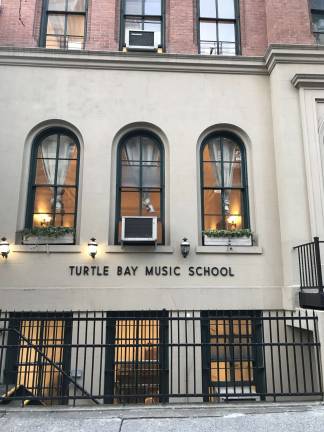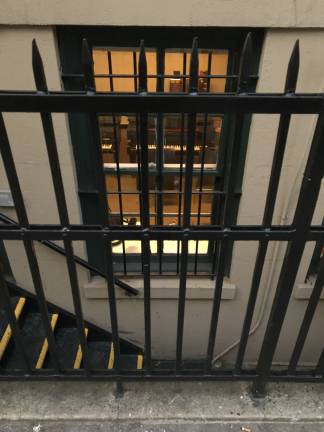music school migrates south


The Turtle Bay Music School was founded in 1925 and has been offering high-quality music education to all ages, skill sets and incomes levels at its current home at 244 East 52nd Street off Second Avenue since 1935.
Now, the community music school is finalizing plans to pull up stakes and move into another community: It will soon be making music and minting musicians 14 blocks to the south, Straus News has learned.
TBMS has historically embraced what it calls the “transformative power of music” and its “integral role in daily life.” But rarely in its 93 years as a non-profit has the school itself faced such a dramatic transformation.
Among the changes on tap, according to real estate sources, neighbors and a recruitment document posted online by the school’s executive search firm:
• TBMS is in the process of selling its three-story, double townhouse, an 1865 building with a beige-stone base, red-brick top and Romanesque arches that originally housed the German-American School Society.
• The school is also in the “final stages” of buying a new home near East 38th Street and First Avenue. It will then execute renovation plans “with a goal of occupying the new space by fall 2018 with limited downtime.”
• Once the school’s relocation has taken place, it will launch a “music-centric pre-school” for up to 64 children. The early-childhood initiative will provide a major new revenue stream for TBMS, which has a nine-person staff and $2 million-plus budget, and “create a feeder” for the school’s programs.
• Meanwhile, British-born soprano and arts administrator Lorna Jane Norris, vice president of education at the South Shore Conservatory near Boston, was tapped as executive director of TBMS on January 12th.
She’ll start in mid-March, and her charge is to lead the school into the new facility, while honoring its traditional programming, which reaches more than 5,000 New Yorkers a year through classes, lessons, concerts and grassroots engagement with public schools and senior centers.
The TBMS community is “deeply committed to ensuring that the transformative power of music is accessible to everyone,” Norris said in a statement. “We need it now more than ever.”
Helene Blieberg, the school’s interim executive director, declined to comment on any prospective move. “The Turtle Bay Music School is a vibrant institution that is always looking for ways to best serve our community,” she said.
Blieberg has been serving in an interim capacity since last October, after Julie Rulyak Steinberg, the previous executive director and self-described “head turtle,” left to take the helm of the Community Music Center in San Francisco.
The details of the school’s real estate play, and the rationale for it, were spelled out in recruitment materials prepared by PBR Executive Search, the firm tasked with helping the school land a new executive director, a hunt that just concluded with the hiring of Norris.
“As it approaches its 100th anniversary, TBMS finds itself at an inflection point,” PBR wrote. “Having outlived its current space, the organization is in the final stages of acquiring a brand-new home.”
The new location, “in a dense residential community” near the NYU Langone medical center, “will give TBMS a vibrant on-street presence, spacious new offices, bright classrooms, a state-of-the art auditorium, and room to launch the pre-school,” the PBR posting said. “The move is a project well underway ...”
A responsibility of the “ideal” executive director, PBR said, will be to help guide the sale of the current location and the purchase and timely renovation of the new space for a projected fall move-in.
The status of the planned sale wasn’t immediately clear. Nor was the identity of a would-be purchaser. A closing on the 52nd Street property doesn’t appear to have taken place yet, though there is often a delay in filing real estate transfer records.
And there is another uncertainty on the block: What happens to the site when TBMS moves out?
The school occupies 50 feet of street frontage, its footprint is 100-feet deep, and if a developer is able to create an assemblage with two or three of the adjoining low-lying properties to the east, a residential tower stretching toward Second Avenue could possibly be constructed.
“Our biggest concern is what it might do to our neighborhood,” said Sylvain Michaelis, a graphic designer who lives around the corner at 251 East 51st Street with his wife Irene, giving them a northern view of the rear of the building from his sixth-floor apartment windows.
“The school was always a great anchor for the neighborhood, and that charming old building added a certain hominess and neighborliness to the area,” he said.
Most of all, he will miss the sound of music. “When I open my windows in the summer, I can hear the playing of the piano and the practicing of the violin, and it adds some real ambiance to the neighborhood,” Michaelis said.